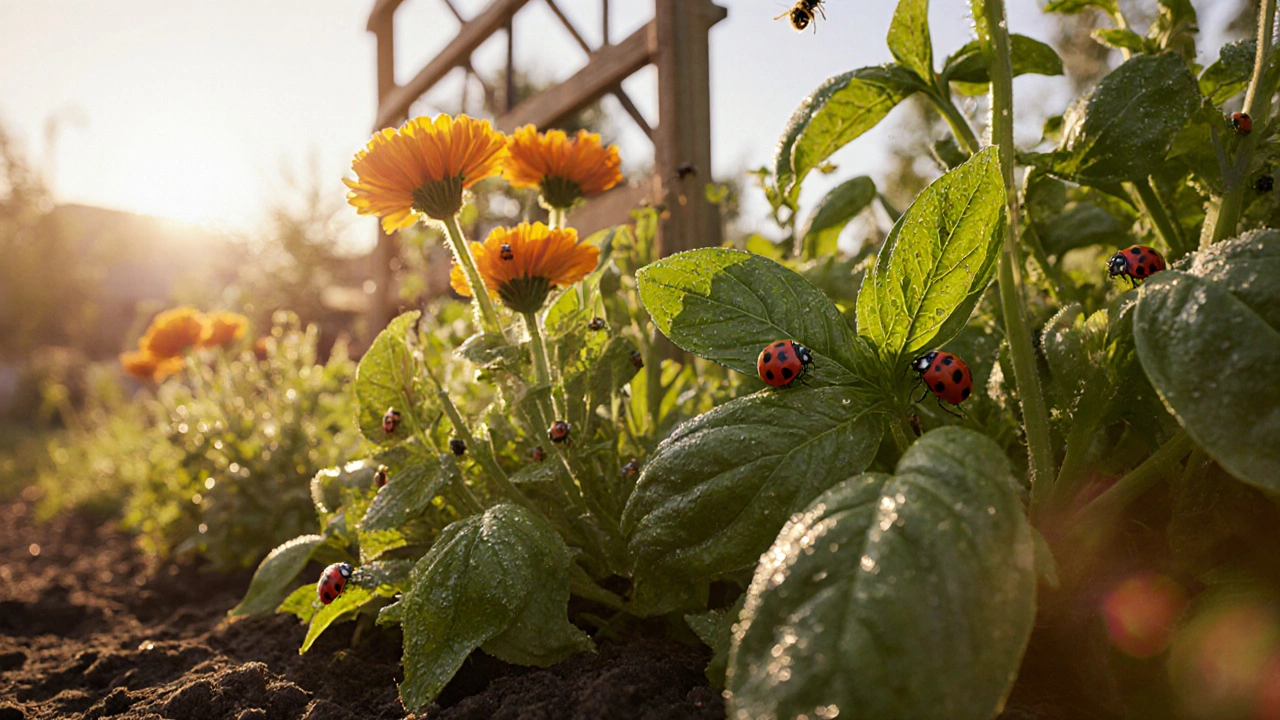Homemade Insect Spray: Natural DIY Pest Control Solutions
When working with homemade insect spray, a DIY blend that repels garden pests without harsh chemicals. Also known as natural pest spray, it lets anyone protect veggies, flowers, and indoor plants using kitchen staples.
This approach sits inside the broader world of natural pest control, methods that keep bugs at bay while preserving soil life. It requires simple tools – a spray bottle, a stirring stick, and a measuring cup – and it benefits both beginners and seasoned gardeners. Two of the most common ingredients are essential oils, concentrated plant extracts that act as strong insect deterrents and neem oil, a cold‑pressed oil from the neem tree renowned for its broad‑spectrum pest activity. Together they form the backbone of many effective recipes.
Key Elements and How They Connect
Understanding the relationship between ingredients helps you tweak recipes for specific bugs. For example, a blend of water, mild soap, and peppermint essential oil creates a light mist that works well against aphids and spider mites. The soap acts as a surfactant, letting the oil spread evenly over leaf surfaces – a classic subject‑predicate‑object link: soap enables oil distribution. If you swap peppermint for eucalyptus oil, you target larger insects like beetles because the scent profile changes, showing how essential oil type influences pest target.
Another common combo pairs neem oil with a touch of garlic puree. Garlic adds a pungent aroma that deters many chewing insects, while neem interferes with their feeding and reproduction cycles. This creates a dual‑action spray: neem oil suppresses growth and garlic repels entry. Both ingredients are safe for most beneficial insects when used in proper dilution, reinforcing the idea that organic garden DIY can protect crops without harming pollinators.
Safety and storage are also part of the picture. Always label your bottles, store them away from direct sunlight, and test a small leaf area before full application. These steps reduce the risk of leaf burn and keep your homemade insect spray effective for weeks. By following these simple checks, you turn a kitchen hobby into a reliable pest‑management tool.
Below you’ll find a curated list of articles that dive deeper into each of these topics – from step‑by‑step recipes to troubleshooting tips for common problems. Whether you’re looking for a quick pepper‑based spray or a full‑scale neem routine, the collection gives you practical, ready‑to‑use guidance to keep your garden thriving.
DIY Natural Pest Control: Simple Home Remedies for a Bug‑Free Garden
Learn practical DIY natural pest control methods-from garlic spray to diatomaceous earth-plus recipes, safety tips, a comparison table and a handy checklist for a healthier garden.
About
Pest Control
Latest Posts


How to Safely Stabilize Sloped Soil for Terrace Gardening
By Alden Thorne Mar 9, 2025

Lotus Lifespan: How Long Does a Lotus Really Live?
By Alden Thorne May 24, 2025

The Most Difficult Plant to Grow on Your Balcony
By Alden Thorne Feb 6, 2025

